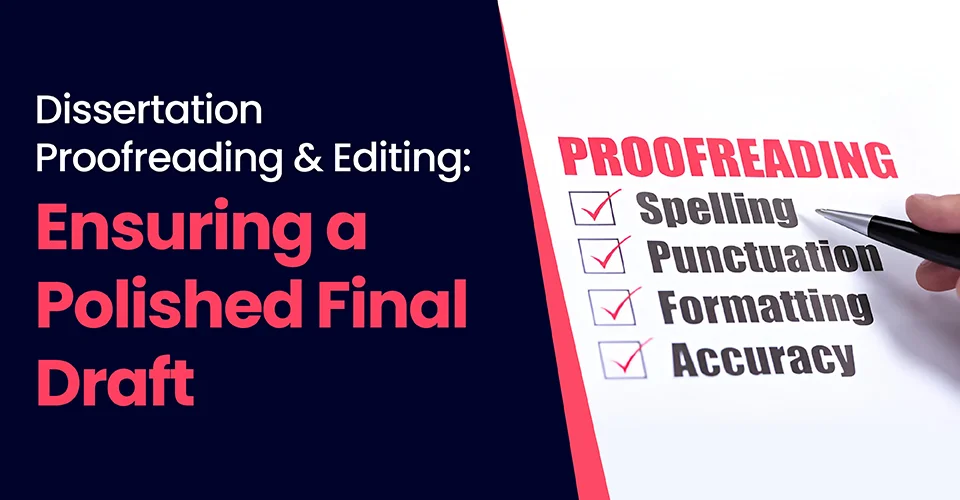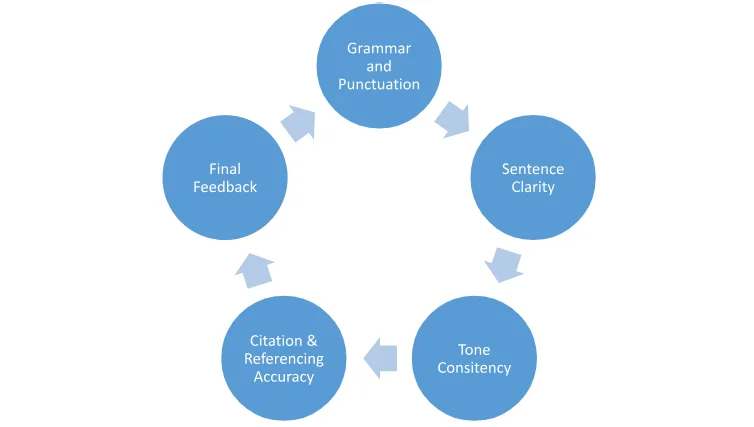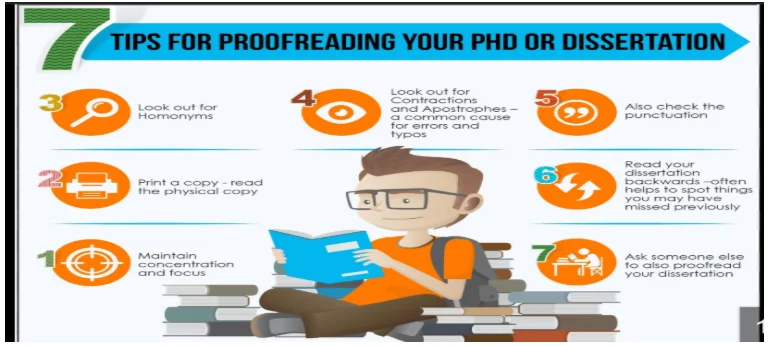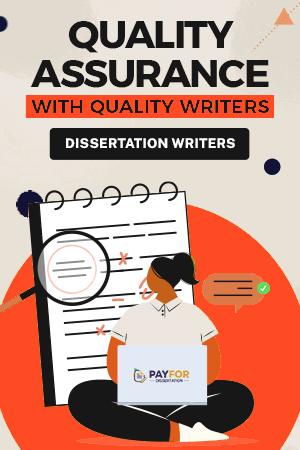
Dissertation Proofreading and Editing: Ensuring a Polished Final Draft
Completing a dissertation is a huge academic task, which should be done with precision, clarity, and carefulness. Any ambiguity for the reader or an unchecked mistake can drastically change the value of the dissertation as a whole. Proofreading comes here to recheck the work and make sure that your final draft is free of mistakes. Actually, it is not just about fixing typos but also about reviewing the formatting, structure, and referencing of the dissertation.
This blog will tell you why proofreading and editing matter in order to make a final draft. We will also go over some common mistakes to avoid and tools you can use to enhance your proofreading and editing.
Why Dissertation Proofreading Matters?
A dissertation is not a day or two process, but it requires months and years to complete. A well-researched dissertation is valued, and the duration of the research reflects the dedication of the writer and the authenticity of the content. Proofreading guarantees that all of your thoughts are communicated in a professional, logical, and straightforward manner. It assists in getting rid of mistakes that might mislead readers or lower your scores.
Academic Integrity
Using proper language and punctuation is crucial to preserving academic integrity. The importance of your job might be compromised by even small errors. Consistent verb tenses, appropriately positioned commas and semicolons, and the avoidance of apostrophe abuse are all ensured via proofreading.
Improved Readability
Your arguments will be simple to understand if your sentences are well-structured. An improved sentence structure will also enhance the readability of your content. Finding unnecessarily complicated sentences or ambiguous statements is made easier with proofreading. Simplifying your writing maintains reader interest throughout the content.
Common Editing Mistakes to Avoid
Editing is a crucial stage in the writing process, yet many students tend to rush this part and check their content just with spell checkers, which is obviously not enough. This results in recurring mistakes that negatively impact the credibility of the work. Understanding and addressing common editing mistakes can enhance the overall quality of your content.
Grammar and Punctuation Checks
Although spellcheckers are useful, they frequently fail to detect contextual problems. For example, they could overlook tiny grammatical errors or homophones that could change a sentence's meaning. Double negatives, improperly employed modifiers, and sentence fragments are examples that are often missed.
These problems have the potential to be confusing and divert attention from the primary points of contention. To identify these subtleties and make sure the work follows grammatical rules, manual proofreading is essential.
Improving Sentence Structure and Clarity
A lot of students unintentionally employ jargon or complex wording, which makes their contenthard to read, even though academic writing demands clarity. Sentences that are too complicated may make it difficult to comprehend the primary idea.
Enhancing readability can be achieved by removing superfluous jargon and simplifying language. In addition to improving comprehension, writing that is clear and succinct also conveys a greater degree of academic expertise.
Consistency in Style & Tone
Style and tone inconsistencies across a document are another frequent error. Coherence and professionalism depend on speaking in a consistent tone. The selected style should be maintained throughout the whole work, regardless of whether it is official or casual. Changes in tone canmake the writing less good overall. The final output may be made more polished by checking the document for consistent language and style.
Citation and Referencing Accuracy
Correct referencing and citations are among the most important components of academic writing. Among the most common errors students make are incorrect citations and punctuation are all governed by several academic styles. Academic styles include APA, Harvard, MLA, and Chicago.
Typical problems include missing bibliographic references and misplaced commas and periods. Improper source citation can have serious repercussions, including plagiarism charges. It is possible to consider even inadvertent omissions, like a missing in-text citation, to constitute plagiarism. In order to preserve academic work's integrity and legitimacy, citations must be carefully considered.
Final Feedback
Any academic paper must undergo a final evaluation before submission. This final phase enables a thorough review of the whole document, guaranteeing that all prior errors have been fixed. Getting input from professors might yield insightful information that may have been missed. Constructive criticism provides ideas for improvement and aids in identifying areas of weakness.

Steps to Proofread a Dissertation Effectively
As we know, the importance of proofreading, but in order to do it, we need a strategic approach, right? Here is a step-by-step elaboration of how proofreading of a dissertation should be done in order to enhance the quality of your content:
First, Take a Break
Consistently working on the same piece of work can definitely exhaust you. So, the first step in proofreading is to take a break. This break enables you to come back with a new perspective, which makes it simpler to identify mistakes and discrepancies that you could miss right after writing.
Print it out
Errors in your dissertation that could go undetected on a screen can be found when you read it in print. Frequently, the shift in media offers a fresh viewpoint that makes problems easier to see. In a paper, formatting mistakes or strange wording could be easier to see.
Read Loud
One effective strategy for slowing down is reading your dissertation out loud. Run-on phrases, grammatical mistakes, and odd wording can all be found with this method.
Use a Checklist
First, note down what you have to check in a dissertation, like the:
- Grammar mistakes
- Tone of the content
- Incorrect formatting or citations
This methodical technique makes sure you don't overlook important details, which improves the efficiency of your proofreading process.
Ask for Feedback
Talking about your dissertation with mentors, advisers, or fellow students might yield insightful information. They could point up mistakes you've missed and provide recommendations for enhancements. Take their criticism seriously and make the required changes to improve your job.
Check Referencing
Verify that every reference is correct and formatted in accordance with the necessary style guide (APA, MLA, Chicago, etc.). Verify the bibliography again to make sure all of the sources are listed and properly credited. In order to preserve academic integrity, this step is essential.
Use Editing Tools
Although checking by hand is crucial, you can also pay for dissertation proofreading, and using editing tools can assist in identifying mistakes. Grammar and style problems can be solved with the help of programs like Grammarly or ProWritingAid. However, as automated tools could overlook context-specific problems, these shouldn't take the place of comprehensive manual tests.
Final Review
Review your dissertation one more time after finishing all the earlier phases. This last review guarantees that the document is prepared for submission and that all necessary modifications have been made. Make sure your arguments are well-stated and focus on overall coherence and flow.

Tools and Resources for Proofreading & Editing
The editing process is greatly streamlined by modern technologies, which combine automatic and human techniques to provide thorough results. Automated and manual proofreading must seem new to you. Here is how they differ from each other:
Manual vs Automated Proofreading
Automated technologies are swift and effective; they can detect spelling and basic grammatical mistakes in papers and scan them for faults. Although these algorithms are excellent at spotting superficial faults, manual proofreading helps spot context-based problems and guarantees that tone and logic are maintained. It's ideal to utilize automatic tools for the first round of proofreading and then do extensive manual checks for the best outcomes.
| Feature | Automated Proofreading | Manual Proofreading |
|---|---|---|
| Speed | ✓ | ✗ |
| Grammar and Spelling Checks | ✓ | ✓ |
| Clarity & Consistency | ✓ | ✓ |
| Contextual Understanding | ✗ | ✓ |
| Plagiarism Detection | ✓ | ✗ |
| Citation & Formatting | ✗ | ✓ |
| Final Review | ✗ | ✓ |
Recommended Editing Tools
You may improve your editing process with a few suggested tools. There are a number of tools that are creating so much ease for writers. The most commonly used are:
- Grammarly is a great tool for improving your writing style by offering suggestions for basic grammar and tone.
- The Hemingway Editor encourages conciseness and clarity by highlighting complicated phrases and passive voice. It is made especially for academic proofreading checks.
- Citation management software such as Mendeley, EndNote, and Zotero automatically creates references and guarantees correct formatting.
- Turnitin helps identify accidental plagiarism and enhances originality in your writing.
- Another dependable built-in tool for grammar and style recommendations is Microsoft Editor, which makes it simple to improve your writing.
Conclusion:
Proofreading is a transforming procedure that may take your dissertation from okay to great. It's not just a finishing touch. A well-proofread manuscript exhibits academic integrity, professionalism, and straightforward communication of your views.
You can make sure your dissertation is free of errors, well-structured, and academically sound by adhering to set procedures and making use of the appropriate tools and resources. The important thing is to put time and effort into this crucial phase, regardless of whether you rely on software, yourself, or expert assistance. Keep in mind that your delivery is just as crucial in academic settings as your content. Effective proofreading can help you show off your hard work in the best possible light.
